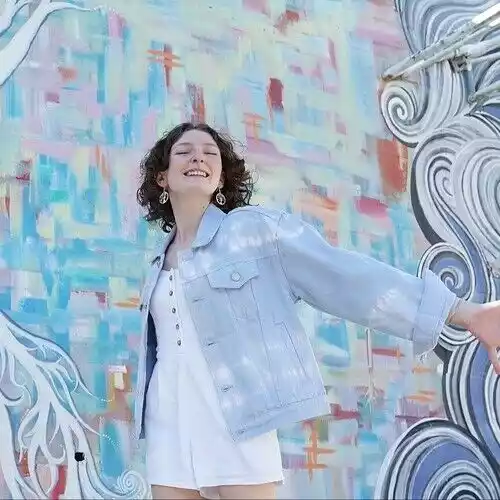Introduction
Graffiti, a vibrant and expressive form of street art, has long been a symbol of urban culture and rebellion. Capturing the essence of graffiti through photography is an art in itself, but the real magic happens in post-production. This stage allows photographers to enhance the colors, textures, and overall impact of the graffiti, making it stand out even more. Whether you’re a professional photographer or an enthusiast, mastering the art of editing graffiti images can elevate your work to new heights.
Post-production is where you can correct lighting issues, remove unwanted elements, and bring out the true colors of the graffiti. It’s a process that requires a keen eye for detail and a good understanding of the tools at your disposal. From basic adjustments like cropping and brightness to advanced techniques like color grading and texture enhancement, post-production offers endless possibilities for creativity.
In this comprehensive guide, we’ll delve into the various aspects of editing graffiti images in post-production. We’ll explore the tools you need, basic and advanced editing techniques, and tips for preserving the authenticity of the graffiti. We’ll also look at common mistakes to avoid and provide practical tips for success. So, let’s dive into the world of graffiti editing and discover how you can transform your photos into stunning works of art.
Understanding Graffiti Photography
Capturing the Essence of Graffiti
Graffiti is more than just paint on a wall; it’s a form of expression that tells a story. Capturing this essence requires more than just pointing and shooting. You need to understand the context of the graffiti, the message it conveys, and the environment in which it exists. This means paying attention to the lighting, angles, and composition to ensure that the photograph does justice to the original artwork.
Challenges in Graffiti Photography
Photographing graffiti comes with its own set of challenges. Urban environments can be unpredictable, with varying lighting conditions and high foot traffic. You might have to deal with shadows, reflections, and other distractions that can detract from the graffiti. Additionally, capturing large murals in confined spaces can be tricky, requiring creative solutions to get the perfect shot.
Tools for Editing Graffiti Images

Essential Software for Post-Production
To edit graffiti images effectively, you’ll need the right software. Here are some popular choices:
• Adobe Photoshop: Known for its extensive range of tools and capabilities, Photoshop is a favorite among professional photographers.
• Lightroom: Ideal for batch processing and color grading, Lightroom is great for managing large collections of photos.
• GIMP: A free alternative with powerful features, GIMP is perfect for those on a budget.
Hardware Requirements for Optimal Editing
Editing graffiti images requires a robust computer setup. Here are some key components:
• Processor: A powerful processor ensures smooth performance, especially when working with large files.
• RAM: Ample RAM is crucial for multitasking and handling complex edits.
• Monitor: A high-resolution monitor with accurate color representation is essential for precise editing.
• Graphics Tablet: For detailed retouching work, a graphics tablet can enhance control and accuracy.
Basic Editing Techniques
Cropping and Framing
Cropping and framing are fundamental editing techniques that can significantly impact the composition of graffiti images. By removing unnecessary elements and focusing on the main subject, you can create more compelling and visually appealing images.
Adjusting Brightness and Contrast
Adjusting brightness and contrast helps to enhance the visibility and vibrancy of graffiti. This technique can bring out details that might be lost in shadows or highlights, making the artwork stand out more prominently.
Advanced Editing Techniques

Color Correction and Grading
Color correction and grading are advanced techniques that involve adjusting the colors in an image to achieve a desired look. This can include balancing the color temperature, enhancing specific hues, and creating a cohesive color palette that complements the graffiti.
Removing Unwanted Elements
Removing unwanted elements, such as graffiti tags or distracting backgrounds, is a common task in post-production. This can be done using tools like the clone stamp or healing brush in Photoshop, allowing editors to clean up the image while maintaining its integrity.
Enhancing Graffiti Details
Sharpening Techniques
Sharpening techniques help to enhance the details and textures in graffiti images. This can be achieved through various methods, such as using the unsharp mask or high-pass filter in Photoshop. Proper sharpening can make the artwork appear more crisp and defined.
Highlighting Textures and Patterns
Highlighting textures and patterns is essential for showcasing the intricate details of graffiti. This can involve adjusting the clarity and structure of the image, as well as using selective editing techniques to emphasize specific areas.
Creative Effects in Graffiti Editing
Adding Filters and Effects
Adding filters and effects can give graffiti images a unique and artistic look. This can include applying vintage filters, creating double exposures, or using lens flares to add a creative touch. These effects can enhance the visual appeal and make the images stand out.
Creating a Unique Style
Developing a unique editing style is important for creating a cohesive and recognizable portfolio. This can involve experimenting with different techniques, such as color grading, texture overlays, and creative compositions, to find a signature look that reflects the editor’s artistic vision.
Preserving the Authenticity of Graffiti
Balancing Enhancement and Originality
While editing graffiti images, it’s important to strike a balance between enhancement and originality. Over-editing can alter the essence of the artwork, while subtle enhancements can bring out its best features without compromising its authenticity.
Ethical Considerations in Editing
Ethical considerations play a significant role in graffiti editing. Editors must respect the original artwork and the artist’s intent, avoiding any alterations that could misrepresent the message or context of the graffiti. This includes being mindful of cultural and social implications.
Workflow Optimization
Efficient Editing Workflow
An efficient editing workflow is crucial for managing time and resources effectively. This can involve organizing files, creating presets, and using keyboard shortcuts to streamline the editing process. A well-structured workflow ensures consistency and productivity.
Batch Processing Techniques
Batch processing techniques allow editors to apply the same adjustments to multiple images simultaneously. This is particularly useful for large projects, as it saves time and ensures uniformity across the edited images.
Case Studies
Successful Graffiti Image Edits
Examining successful graffiti image edits can provide valuable insights and inspiration. Case studies of professional editors can showcase different techniques and approaches, highlighting what works and why.
Lessons Learned from Professional Editors
Learning from professional editors involves understanding their workflow, tools, and creative processes. This can include tips on overcoming common challenges, staying motivated, and continuously improving one’s skills.
Common Mistakes to Avoid
Over-Editing
Over-editing is a common mistake that can detract from the authenticity of graffiti images. This includes excessive use of filters, unnatural color adjustments, and over-sharpening. It’s important to maintain a balance and avoid making the artwork look artificial.
Ignoring the Original Context
Ignoring the original context of graffiti can lead to misrepresentation. Editors must consider the environment, cultural significance, and message of the artwork, ensuring that their edits respect and preserve these elements.
Tips for Success
Staying Updated with Trends
Staying updated with trends in graffiti and digital editing is essential for success. This can involve following industry blogs, participating in online communities, and attending workshops to stay informed about new techniques and tools.
Continuous Learning and Practice
Continuous learning and practice are key to mastering graffiti editing. This includes experimenting with different styles, seeking feedback, and dedicating time to honing one’s skills. Consistent practice leads to improvement and innovation.
Variations in Graffiti Editing
Urban vs. Rural Graffiti
Urban and rural graffiti present different challenges and opportunities for editing. Urban graffiti often involves complex backgrounds and high contrast, while rural graffiti may require adjustments for natural lighting and textures. Understanding these variations helps in creating effective edits.
Different Styles and Techniques
Graffiti comes in various styles, from traditional tags to elaborate murals. Each style requires different editing techniques to bring out its unique characteristics. Familiarity with these styles and techniques allows for more tailored and impactful edits.
FAQs
How to Start Editing Graffiti Images?
Starting with graffiti image editing involves understanding the basics of photography and post-production. Begin by capturing high-quality images, focusing on composition and lighting. Use software like Adobe Photoshop or Lightroom to make initial adjustments, such as cropping and color correction. Practice regularly and seek feedback to improve your skills.
What Software is Best for Graffiti Editing?
The best software for graffiti editing depends on your needs and preferences. Adobe Photoshop is a popular choice for its extensive tools and capabilities. Lightroom is great for batch processing and color grading. GIMP is a free alternative with powerful features. Experiment with different software to find what works best for you.
How to Maintain the Original Look of Graffiti?
Maintaining the original look of graffiti involves subtle enhancements that preserve the artwork’s authenticity. Avoid over-editing and focus on adjustments that enhance visibility and vibrancy without altering the essence. Respect the artist’s intent and the cultural context of the graffiti.
What are the Common Challenges in Graffiti Editing?
Common challenges in graffiti editing include dealing with varying lighting conditions, removing unwanted elements, and balancing enhancement with authenticity. Understanding these challenges and developing strategies to overcome them is crucial for successful editing.
How to Learn Advanced Editing Techniques?
Learning advanced editing techniques involves continuous practice, seeking feedback, and staying updated with industry trends. Online tutorials, workshops, and courses can provide valuable insights and guidance. Experiment with different techniques and tools to develop your skills and create unique edits.
Conclusion
Editing graffiti images in post-production is a blend of technical skills and creative expression. By understanding the essence of graffiti, using the right tools, and practicing ethical considerations, editors can create impactful and authentic images. Continuous learning and practice are key to mastering this art form, allowing for innovation and growth in the field of graffiti photography and editing.
Relevant Data Table
| Software | Features | Price |
|---|---|---|
| Adobe Photoshop | Extensive tools, layers, masks | $20.99/month |
| Lightroom | Batch processing, color grading | $9.99/month |
| GIMP | Free, open-source, powerful features | Free |
Sources
– “The Ultimate Guide to Editing Graffiti Photos” – Photography Life
– “Mastering Graffiti Photography and Editing” – Digital Photography School
– “Top 10 Tips for Editing Graffiti Images” – Creative Bloq
Light & Airy Pastel Edits ft. Visual Flow’s Pastel Pack
Ruth Aquilani is a renowned graffiti artist known for her bold, colorful, and expressive style. She began her career as a street artist in the early 2000s, quickly making a name for herself in the graffiti community with her unique and striking works of art.
